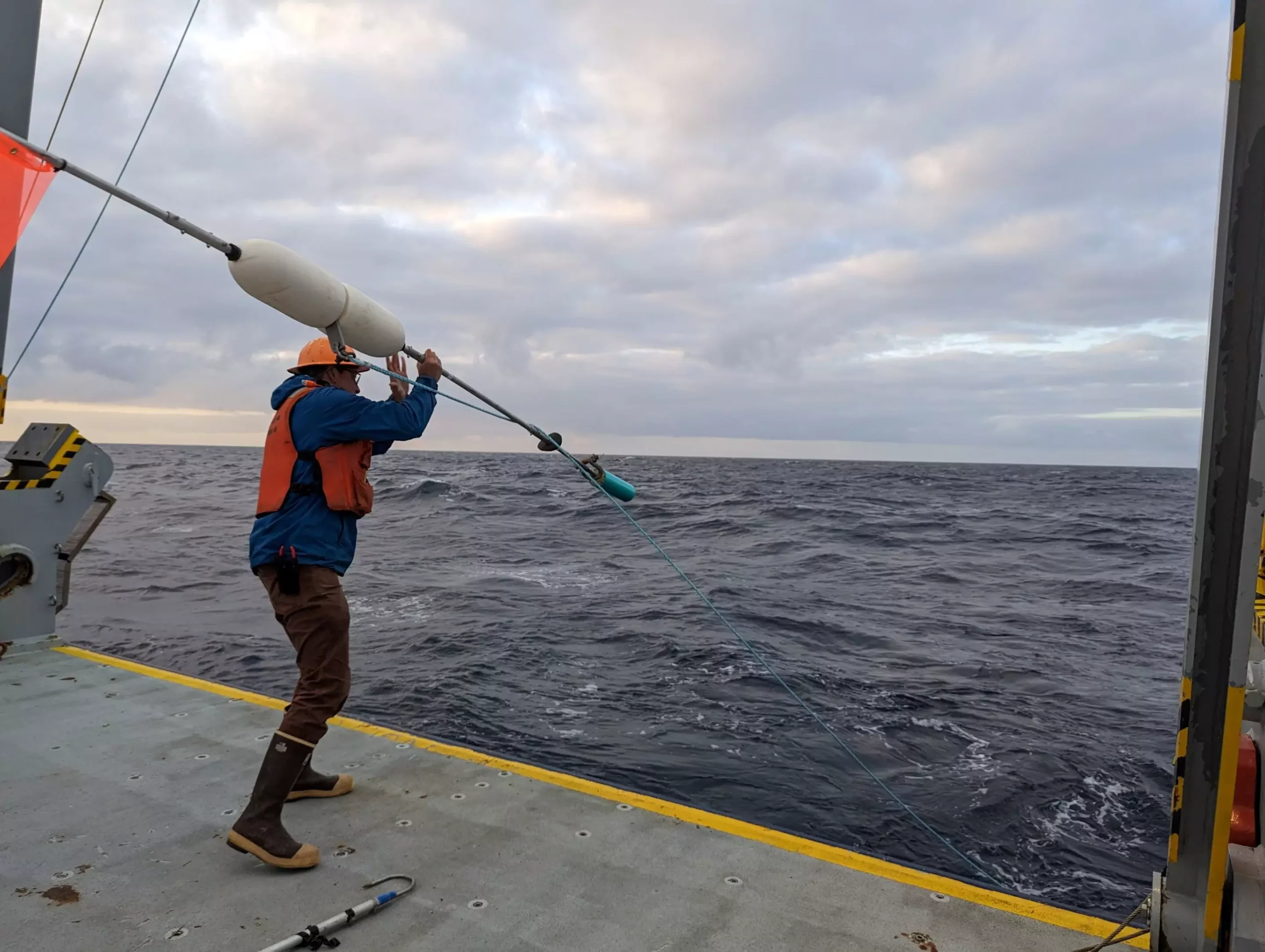The movement of carbon dioxide (CO2) from the ocean’s surface to its depths is a critical aspect of the global carbon cycle, influencing not only climate change but also oceanic health. At first glance, this process might appear straightforward; however, it is orchestrated by an intricate interplay of biological and chemical factors. One important player in this dynamic world is bacteria, which thrive on organic compounds like lipids. A fresh study published in the journal *Science*, titled “Microbial dietary preference and interactions affect the export of lipids to the deep ocean,” illuminates how bacterial feeding habits shape the efficacy of carbon sequestration in marine environments—revealing complexities that could impact our understanding of global carbon fluxes.
Benjamin Van Mooy, a senior scientist at the Woods Hole Oceanographic Institution and co-author of the study, notes that bacteria exhibit astonishing diversity in their dietary preferences, especially concerning lipids. This research emphasizes that not all microbes are created equal when it comes to declaiming nutrients from organic matter. The study found that some bacteria are highly selective in their feeding behavior, favoring specific lipid molecules over others. This specialization has profound implications for understanding how carbon is transformed and transported in oceanic systems.
The biological carbon pump describes how organic materials descend from the ocean’s surface into the deep sea, where they can be sequestered for extended periods. Lipids represent a significant portion of the particulate organic matter, primarily contributing to its carbon content. Consequently, bacteria that digest these lipids play a vital role in modulating the flow of carbon in the ocean. In doing so, their feeding habits and interactions drastically influence overall carbon sequestration rates, providing an opportunity to identify potential hotspots for natural carbon storage.
The study utilized cutting-edge technologies to connect the molecular makeup of sinking organic matter with its rate of degradation, enhancing the understanding of microbial contributions to carbon cycling. Surprisingly, researchers observed that these interactions are not only influenced by individual bacterial preferences but also by interspecies dynamics within microbial communities. These findings suggest that metabolic specialization—where specific microbes excel at degrading certain compounds—can significantly affect the efficiency of lipid transport in marine environments, especially within the mesopelagic zone, which lies roughly 200 to 1,000 meters below the ocean surface.
Co-author Roman Stocker highlighted the groundbreaking nature of combining advanced chemical analyses with microscale imaging technologies. This novel approach offers a richer understanding of microbial behavior, paving the way for future studies to delve deeper into the role microbes play in shaping ocean ecosystems, both now and in the face of ongoing environmental changes.
The environment in which these microorganisms thrive affects lipid composition dramatically. As noted by Van Mooy, variations can occur based on geographical locations—coastal versus open ocean—and seasonal changes. This variability opens new avenues for researchers exploring effective sites where lipids may sink more efficiently and be sequestered, versus areas where similar processes are notably less effective.
The implications of this research on global carbon flux modeling cannot be overstated. Understanding how microbial dietary preferences shape the degradation processes allows scientists to refine predictive models for carbon cycling, especially as it relates to the continuing effects of climate change on ocean ecosystems.
What is particularly compelling about the study is its exploration of microbial competition and cooperation in consuming lipids. Co-author Lars Behrendt pointed out that bacteria’s specific food preferences parallel human eating habits, suggesting a more intricate system of interaction among microbial communities than previously assumed. The study reveals that combinations of bacteria may work more efficiently to break down particular lipid compounds, unlocking essential nutrients that contribute to further microbial growth and ecological balance.
In examining multispecies cultures, rather than isolated strains, the researchers found notable differences in degradation rates. This complexity mirrors natural ecosystems far more accurately than monoculture studies, showcasing the need for holistic approaches in microbial ecology research.
Phytoplankton serve as the bedrock of the oceanic carbon sink, absorbing atmospheric CO2 at a rate comparable to land plants. Their interrelationship with bacteria highlights the collaborative nature of Earth’s carbon cycle and underscores the importance of understanding microbial roles in carbon sequestration. The insights garnered from this study not only deepen the complexity of our understanding of microbial oceanography but also stress the importance of preserving marine environments that serve as critical carbon sinks. As researchers explore these intricate relationships further, it will become increasingly important to integrate findings into policy on ocean conservation and management, ensuring the health of Earth’s vital marine resources.


Leave a Reply